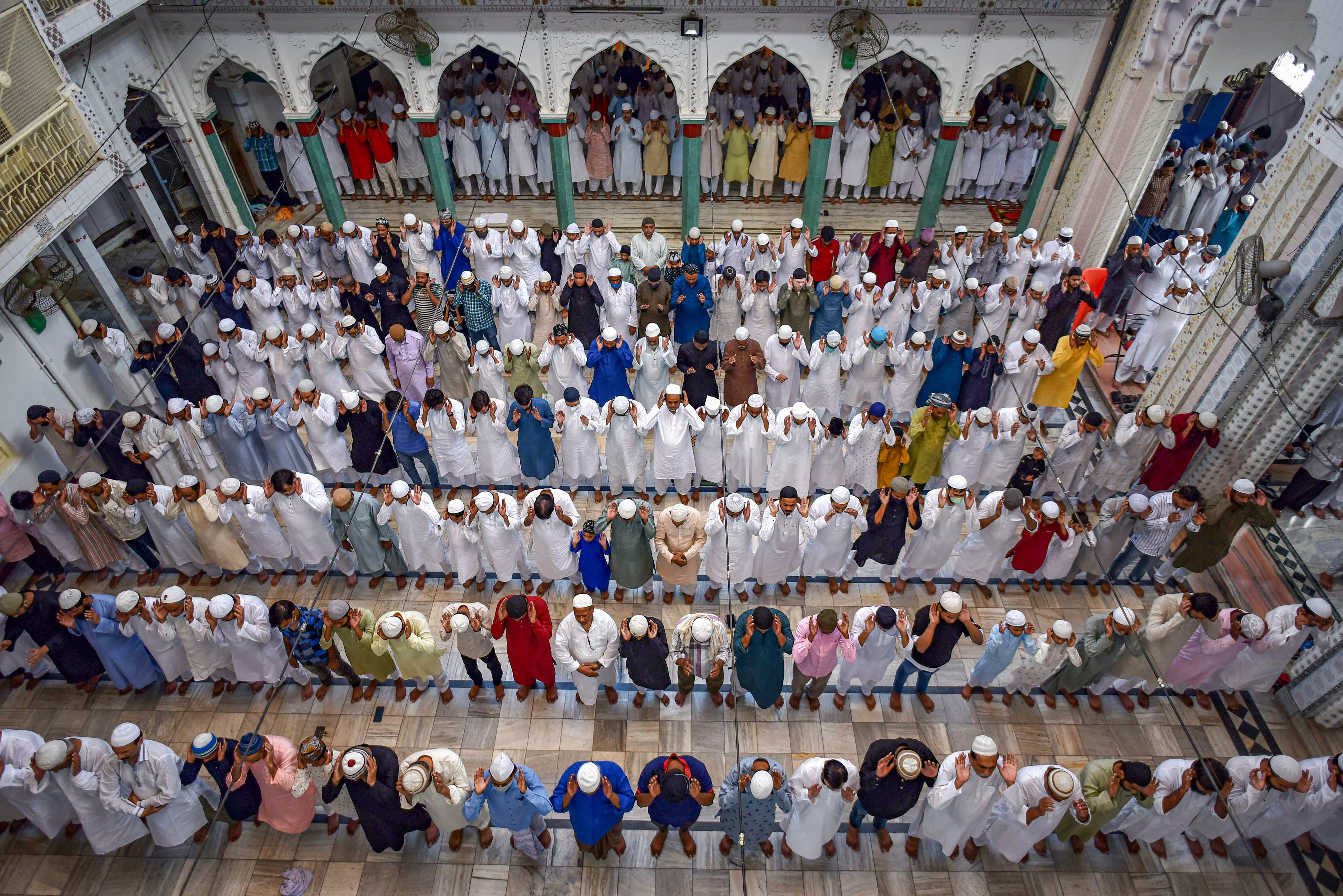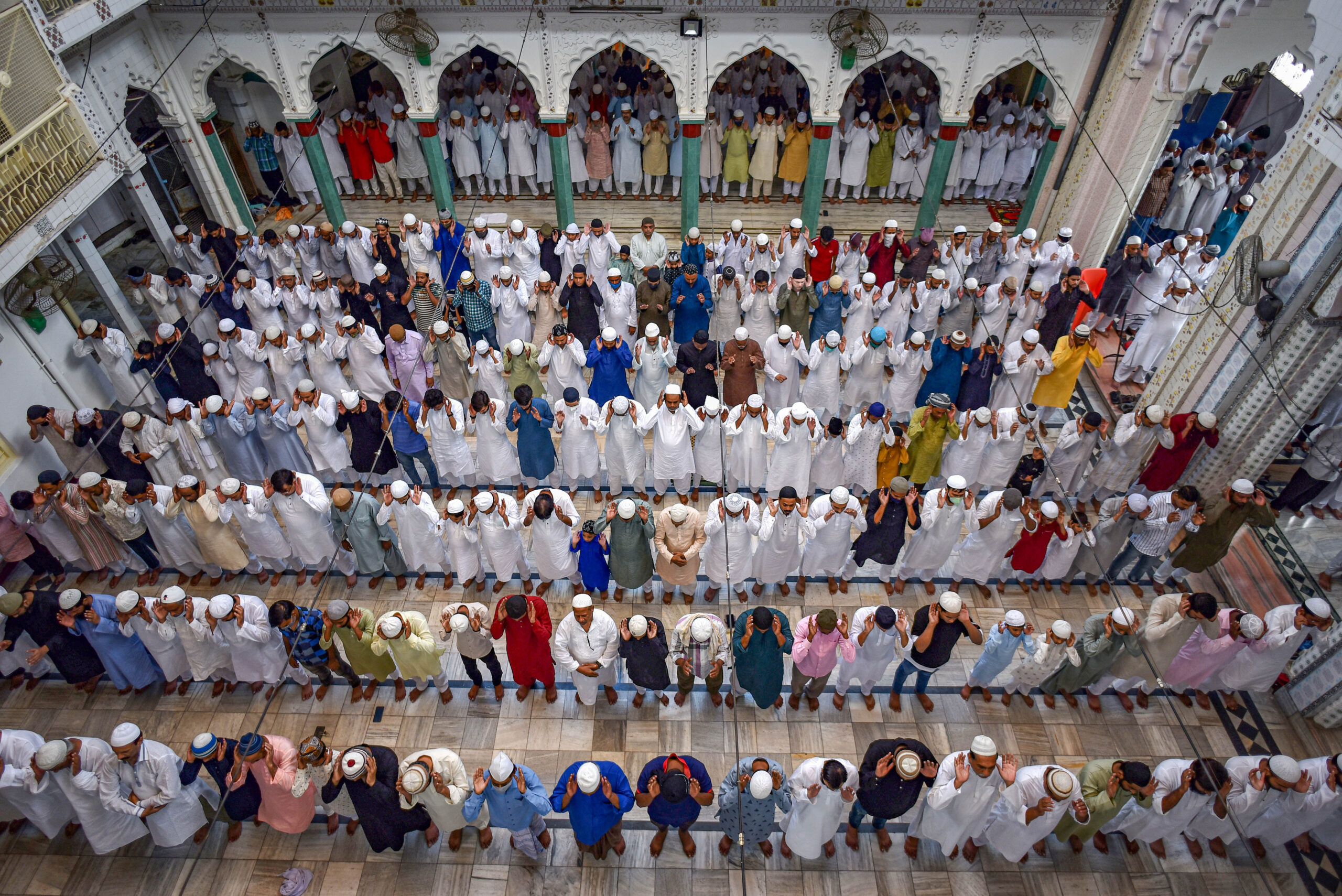
It is a snowball gathering speed. Or may-be it’s a mudslide gaining momentum. Or maybe it’s a virus.
Whatever it is, it seems to be birthing more and more litigation across mostly North India. It certainly seems that keeping the “country on the boil” is back in favour as a tried, tested, easy and successful strategy for the “Hindu Right”, led by the BJP and the nearly 100-year-old voluntary social service outfit RSS.
On a mission to hoist India to the “pinnacle of glory” by reorganising history, chronically litigious Hindu outfits like the International Hari Har Sena Sri Ram Sena, Hindu Sena and a bevy of lawyers and fervent petitioners have filed a slew of cases, in war mode in district courts across North India. The demand is straightforward: demolish and dig up 30,000 sites where believers are certain temples were built over and mosques established. By adding Ajmer Sharif, the shrine of Khwaja Moinuddin Chisti, that needs to be dug up to reportedly uncover a temple dedicated to Lord Shiva, the Hindu Right has outdone itself.
Among the devout, it is usual to place “chadars”, a sheet, on the grave of the Sufi mystic. Among those who have done so in recent times are India’s Prime Minister Narendra Modi and tens of thousands of devotees from all across the world. When Mr Modi sent the chadar, duly captured on camera, it was believed he was trying to appease Muslim voters ahead of the 2024 Lok Sabha elections. Others, however, have prayed and visited Sufi shrines, including the Fatehpur Sikri dargah near Agra, like former French President Nicolas Sarkozy and his partner Carla Bruni, who prayed for a child and indeed had one.
Hindutva or Hindu fundamentalism, or Hindu revival — though why something that flourished for millennia needs rev-ival is a mystery, because it never faded, verged on extinction, though it was in danger of being eclipsed by Buddhism around and after Emperor Ashoka’s times. But in twenty-first century In-dia, some people believe it needs kindling to keep it burning. Reviving temples suspected or believed to have been destroyed is the new and supplementary agenda of Hindutva.
A new archaeology has been established in service of Hindutva. Thanks to former Chief Justice of India D.Y. Chandrachud, the starter or spark or kindling was his 2022 decision to overturn the 1991 law, which sought to “prohibit conversion of any place of worship and to provide for the maintenance of the religious character of any place of worship as it existed on the 15th day of August 1947”, otherwise known as the Places of Worship Act. While the law was meant to be tamper proof, the former Chief Justice, who seemed to fuse his piety with his professional responsibilities, decided that digging into the foundations of Varanasi’s Gyanvapi Masjid to uncover a “Shiva linga” was perfectly in order.
The outcome of the reversal and its consequences are four dead and several injured in UP’s Sambhal over a dispute on what lies below the Shahi Jama Masjid. The claim by a mahant was followed up by a lawyer, who is involved in other places of worship disputes, starting with the Gyanvapi, Mathura’s Shahi Idgah Mosque and the Sambhal dispute. Having retired and thus free to presumably pursue his pieties in private, instead of in front of a camera that turned his devotions into a public spectacle, the retired Chief Justice can now watch from the sidelines the consequences of his decision.
The Hindu Right in pursuit of Hindu revival, aided and abetted by a judiciary that brandishes God to support its decisions that are fundamentally flawed, as in the Ayodhya land dispute, is now part of the archaeology of Hindutva. To legitimise the digs and gigs, advocates and various litigants have a judiciary that is willing to overturn the law to enable what the law said could not be done. So, claims can be confidently made that legal proceedings will progress faster than a “bullet train” and that justice, as defined by them, will be done.
Hindutva archaeology is essential to the project of “de-Islamisation”, as Mujibur Rahman calls it in his recent book, Shikwah e Hind. Digs and gigs are the window dressing required to legitimise the supplementary project to avoid committing what the apex court led by former Chief Justice Ranjan Gogoi described as a “heinous crime”, of mosque demolition in the Ayodhya case.
The law and the taxpayer are vulnerable to being used as a tool of cynical exploitation of sentiment since the Hindu revivalists are essentially a bunch of freeloaders ra-ther than philanthropists or zealous crusaders. With the courts turning into the revivalist’s fa-vourite tool, the changes proposed to the law on Waqf properties will certainly add to the thousands of cases that are already in the judicial system over land and other disputes relating to Waqf-administered properties.
The choice for the Narendra Modi government is simple: it can support the supplementary project of mosque demolition-temple rebuilding and do so by abandoning the Constitution and its basic structure of which secularism is a part. Or, he can rein in the Hindu Right and demolish the supplementary project. He can follow the route he has adopted on the Waqf issue or duck responsibility, albeit temporarily. If that is a choice too stark for the Prime Minister, he can resort to playing cat and mouse with the secularism project and the supplementary project of Hindutva.
Legalising the demolition of Muslim places of worship on the pretext of unverified claims to temples buried under them is a political problem; it is not a problem that the judiciary can solve. The choice and decision that the Modi government has to make is simple. It can either amend the 1991 Places of Worship Act and open the floodgates to the new archaeology that Hindutva is trying to establish; or, it can, in Parliament, in this Win-ter Session, unequivocally declare its commitment to upholding the 1991 law. Any waffling on this as a government is unacceptable.
Flawed and weak as the attempt may have been, from within the ranks of the BJP there was a move to throw out the words “secular” and “socialist” added through the 42nd Amendment in 1976. The Supreme Court, currently headed by Chief Justice Sanjiv Khanna, has thrown out the petition. It does not mean that another petition will not be filed at a different time to which the apex court’s response could be different. The Places of Worship Act reversal is a case in point; mischief can be made whenever there is a convergence of ideas, ideologies, politics and petitioners.
